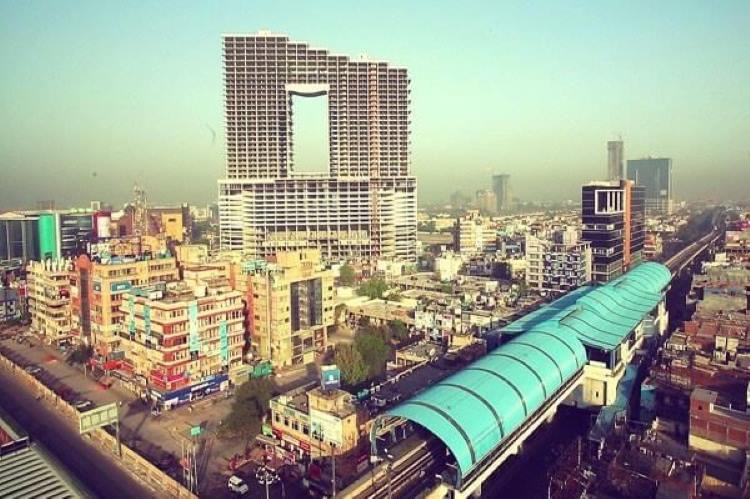The Uttar Pradesh government is optimistic about the state’s economic trajectory, projecting that UP’s gross state domestic product will exceed Rs 32 trillion by March 2025. Labelled as a BIMARU state, along with Bihar, Madhya Pradesh, and Rajasthan, Uttar Pradesh is looking to shed the label and become a flourishing economy. Historically, these states have been among India’s most economically backward states, prompting demographer Ashish Bose to label them BIMARU in the mid-1980s to describe their poor economic conditions.
While the other BIMARU states continue to face developmental challenges, Uttar Pradesh is looking to break free and contribute significantly to India’s progress. The state government’s ambitious plans include major investments in infrastructure, notably the construction of expressways, and initiatives to attract foreign direct investment, with proposals totalling nearly Rs 40 trillion. This is expected to generate 15 million jobs for the youth.
READ | Green finance: India needs to secure funds for energy transition
Uttar Pradesh’s rise as an industrial hub
Uttar Pradesh is gradually transforming from a low-industrialised state to a burgeoning electronics hub. The state has attracted significant investments, including a semiconductor plant by Foxconn and HCL Group near Jewar airport, with the state providing 30 acres of land for the facility. Other major projects, such as Samsung’s mobile unit and the Uttar Pradesh Defence Industrial Corridor, are also underway, with the state aiming for a $1 trillion economy by 2027-28.
According to a recent report by the National Council of Applied Economic Research, the Uttar Pradesh economy is projected to grow at a rate of 7.5% in the fiscal year 2024-25. The state’s growth is fuelled by a combination of government initiatives, industrial investments, and improved infrastructure development.
In a bid to strengthen its manufacturing capabilities and draw global investments, UP has implemented a new industrial policy offering attractive incentives. The state has already received proposals for projects totalling Rs 40,038 crore, including a significant one from the Hiranandani Group for the Tarq Semiconductor plant. Additionally, UP looks to harness the potential of its traditional industries — such as Moradabad’s brass, Firozabad’s glass, and Bhadohi’s carpet manufacturing — as well as its robust agricultural sector.
Over the past seven years, UP’s ranking in the Ease of Doing Business (EODB) index has surged from 14th place in 2016-17 to second place in 2019, and the state is now recognised as a top achiever in EODB. Uttar Pradesh’s economy, which was previously ranked seventh behind states like Maharashtra, Karnataka, Gujarat, and West Bengal, is now the second-largest in the country. The state accounts for over 55% of India’s mobile production and over 50% of mobile component manufacturing. Furthermore, it is emerging as a prominent data centre hub.
Among North Indian states, UP stands alone in actively pursuing high-tech industrial projects—an area traditionally dominated by South Indian states like Karnataka and Tamil Nadu. The Uttar Pradesh government has taken inspiration from these states and Gujarat to develop a dedicated semiconductor policy. Among the state’s anticipated projects are major investments by the Japanese conglomerate Marubeni and India’s Oil and Natural Gas Corporation (ONGC).
Reforms Needed to Sustain Growth Momentum
While UP has made commendable strides in economic development, it continues to face significant challenges in human development. Addressing these disparities should be a top priority for the state government. Development outcomes vary widely across the state. The western region has benefited from the Green Revolution, while the southern region remains entrenched in feudal practices. The central region, which includes the capital Lucknow, has the highest poverty rates, and eastern UP is known for its complex social dynamics. Despite numerous welfare policies since independence, these intra-state disparities remain a pressing concern.
As India’s most populous state, UP must equip its youth with skills in new-age technology to meet global demand for skilled manpower. By investing in quality education and vocational training, the state can unlock the potential of its workforce and ensure long-term economic growth.
Uttar Pradesh is emerging from the shadows of its past, but the state government must not rest on its laurels. It should continue its reform agenda, focusing on industrial development, business reforms, and increasing public expenditure on infrastructure and industries. Improvements in employment and human development must also take centrestage to sustain this growth.
Uttar Pradesh’s economic rise will play a pivotal role in driving India’s overall progress. For India to achieve its aspiration of becoming a global economic powerhouse, uplifting UP and other northern states is essential. UP’s transformation is not just a state story; it is integral to India’s larger economic success.

